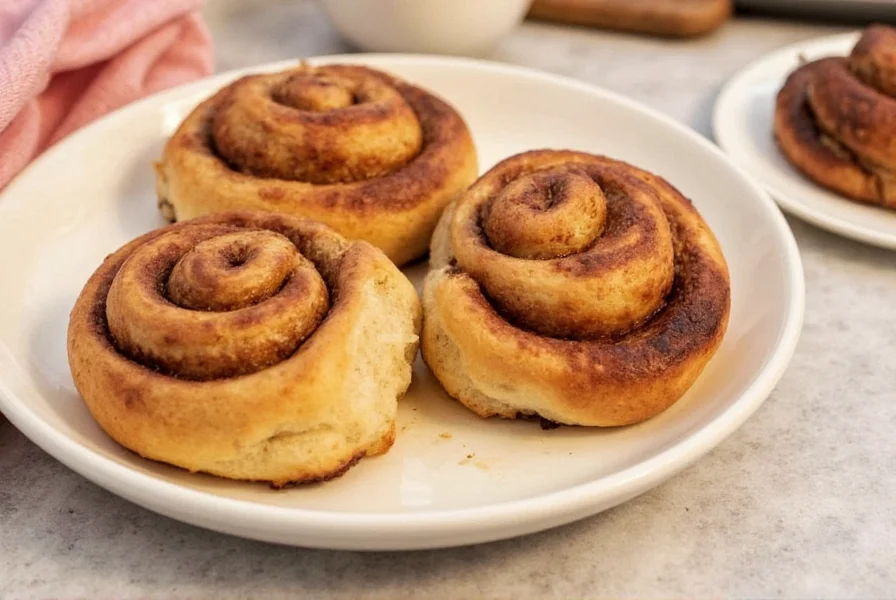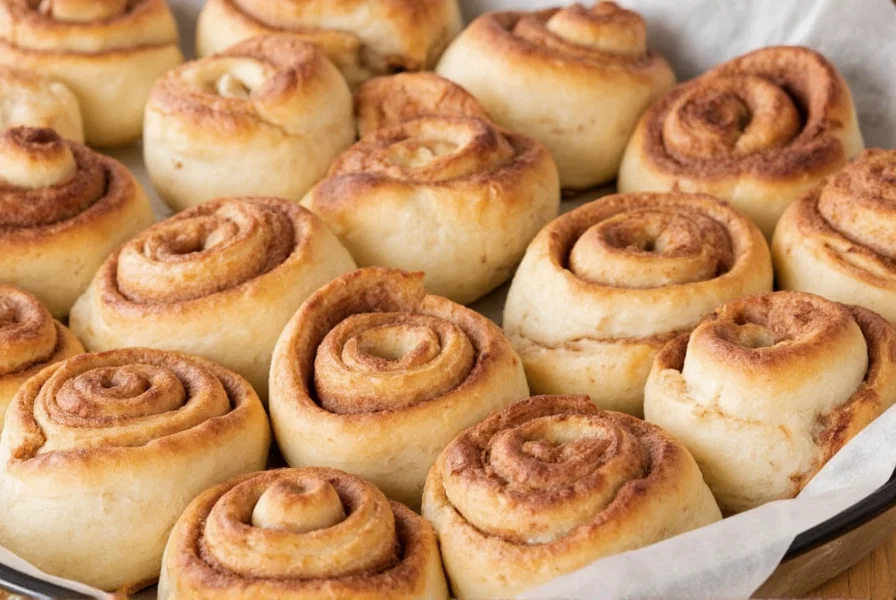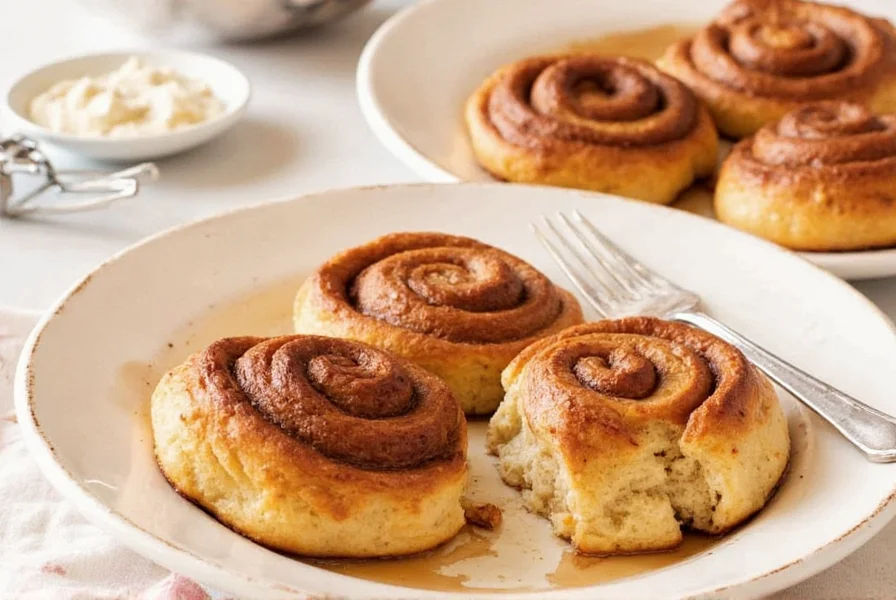When you bite into a true Texas cinnamon roll, you're experiencing a culinary tradition that blends German baking heritage with Lone Star State generosity. These aren't your average morning pastries—they're substantial, flavorful creations that have evolved across Texas communities over generations.
The Texas Cinnamon Roll: More Than Just a Pastry
While cinnamon rolls exist in bakeries worldwide, Texas versions stand apart through their distinctive characteristics. German immigrants brought kolache and roll traditions to Central Texas in the 19th century, but local ingredients and Texas-sized hospitality transformed them into something uniquely regional.
Unlike standard cinnamon rolls that typically serve as individual breakfast portions, authentic Texas cinnamon rolls often measure 4-5 inches in diameter and can comfortably feed two people. This generous sizing reflects Texas culinary culture where "bigger is better" isn't just a saying—it's a way of life.
What Makes Texas Cinnamon Rolls Special
Three key elements distinguish genuine Texas cinnamon rolls from their counterparts elsewhere:
| Characteristic | Standard Cinnamon Rolls | Texas Cinnamon Rolls |
|---|---|---|
| Size | 3-4 inches diameter | 4-6 inches diameter |
| Key Ingredients | Cinnamon, sugar, butter | Pecans, Texas honey, local dairy |
| Glaze Type | Sugar icing | Cream cheese or caramel |
| Serving Tradition | Individual breakfast item | Shared meal component |
Traditional Texas Cinnamon Roll Recipe
Creating authentic Texas cinnamon rolls requires attention to both technique and regional ingredients. This tested recipe yields six substantial rolls that capture the essence of Texas baking traditions.

Ingredients
- 1 cup whole milk, warmed to 110°F
- 2 ¼ tsp active dry yeast
- ½ cup granulated sugar
- 1 egg, room temperature
- ⅓ cup Texas wildflower honey
- ¼ cup unsalted butter, melted
- 3 ½ cups all-purpose flour
- 1 tsp salt
Filling
- ½ cup unsalted butter, softened
- 1 cup packed brown sugar
- 3 tbsp ground cinnamon
- 1 cup chopped Texas pecans
Cream Cheese Glaze
- 4 oz cream cheese, softened
- ¼ cup unsalted butter, softened
- 1 cup powdered sugar
- 1 tsp vanilla extract
- 2-3 tbsp milk
Instructions
- Dough preparation: Combine warm milk, yeast, and 1 tsp sugar in a bowl. Let sit until foamy (5-7 minutes). Mix in remaining sugar, egg, honey, melted butter, 1 cup flour, and salt. Gradually add remaining flour until a soft dough forms.
- Kneading: Knead dough on floured surface for 8-10 minutes until smooth and elastic. Place in greased bowl, cover, and let rise in warm place until doubled (1-1.5 hours).
- Filling assembly: Roll risen dough into 18x12 inch rectangle. Spread softened butter evenly, then sprinkle with brown sugar, cinnamon, and pecans. Roll tightly from long side and cut into 6 equal sections.
- Second rise: Place rolls in greased 9x13 inch baking dish. Cover and let rise until nearly doubled (45-60 minutes).
- Baking: Bake at 375°F for 22-25 minutes until golden brown. Prepare glaze while baking.
- Finishing: Mix all glaze ingredients until smooth. Pour over warm rolls immediately after baking.
Regional Variations Across Texas
Texas is too diverse for a single "official" cinnamon roll style. Different regions have developed their own interpretations:
- Central Texas: Features German-Texan influences with cardamom additions and traditional sugar icing
- East Texas: Incorporates locally-grown pecans and often uses sweet potato in the dough
- West Texas: Heartier versions with cowboy coffee in the dough and extra cinnamon for bold flavor
- South Texas: Sometimes includes a hint of orange zest reflecting Mexican culinary influences

Troubleshooting Common Texas Cinnamon Roll Issues
Even experienced bakers encounter challenges with these substantial pastries. Here's how to solve frequent problems:
- Dense texture: Over-kneading or old yeast causes this. Use fresh yeast and stop kneading when the dough passes the "windowpane test."
- Filling leakage: Texas-sized rolls are prone to this. Create a small border of dough along the edge before rolling and pinch the seam tightly.
- Glaze too thin: Texas humidity affects glaze consistency. Add powdered sugar 1 tbsp at a time until it coats the back of a spoon.
- Uneven rising: Inconsistent kitchen temperatures disrupt the double-rise process essential for Texas cinnamon rolls' signature texture.
Serving Traditions and Pairings
In Texas, cinnamon rolls aren't just breakfast—they're a social experience. Many communities serve them at church breakfasts, school fundraisers, and family gatherings. The generous size encourages sharing, making them perfect for building community.
Traditional pairings include:
- Strong Texas-brewed coffee to cut through the sweetness
- Cold milk with a dash of Texas honey
- Breakfast tacos served alongside for a complete Texas morning meal
For special occasions, many Texas bakeries offer "cinnamon roll bars" where customers customize their rolls with toppings like candied bacon, local jams, or even a splash of Texas bourbon in the glaze.
Frequently Asked Questions
What makes a cinnamon roll authentically Texan?
Authentic Texas cinnamon rolls feature larger portions (typically 4-6 inches), incorporate local ingredients like Texas pecans and wildflower honey, and often use cream cheese or caramel glazes instead of basic sugar icing. The generous sizing reflects Texas culinary culture where portions are meant to be shared.
Can I make Texas cinnamon rolls without pecans?
Yes, though pecans are traditional, you can create authentic Texas-style rolls using Texas wildflower honey as the distinguishing ingredient. Some East Texas variations use sweet potato in the dough instead of nuts. The key Texas elements are the generous size and rich filling, not specifically the pecans.
Why are Texas cinnamon rolls typically larger than standard versions?
The larger size reflects Texas culinary traditions of generous portions and hospitality. Historically, German-Texan bakers adapted their recipes to feed larger families and community gatherings. Texas cinnamon rolls often serve as a shared meal component rather than an individual breakfast item.
What's the best way to reheat Texas cinnamon rolls?
For best results, wrap the roll in a damp paper towel and microwave for 20-30 seconds. Alternatively, place on a baking sheet and warm in a 300°F oven for 8-10 minutes. This preserves the moist texture while reviving the melted glaze without making the roll soggy.











 浙公网安备
33010002000092号
浙公网安备
33010002000092号 浙B2-20120091-4
浙B2-20120091-4